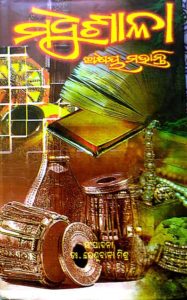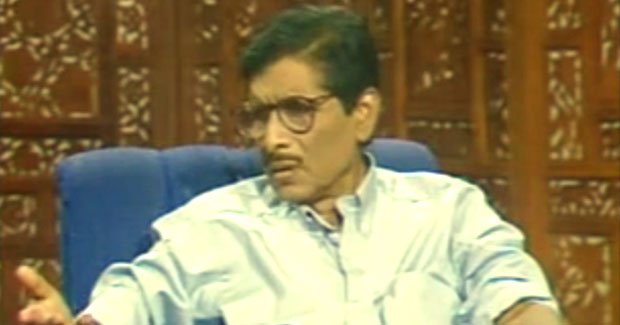Ghazals do not belong to the realm of traditional Odia music or literature. It’s more noteworthy that unlike in some other regions such as Bengal and Maharashtra, the introduction of ghazals to Odisha was not by major cultural exchanges with the Hindustani culture of North India.
Rather, Odia ghazals are a modern phenomenon and can be quite distinctly and definitely attributed to Akshaya Mohanty, arguably the most important music personality of modern Odisha and the man responsible for much experimentation in music.
While some poets had dabbled in Odia ghazals before Akshaya Mohanty, such efforts were few and far between; and lacked the most essential requirement of ghazals — being supported by rendition.
Ghazals, though essentially a form of poetry, are always written to be sung. They are even defined by their rhyming schemes and patterns. The last part of the couplets (‘shers’) of a ghazal is common and called ‘radiff’. Ghazals are often identified by their ‘radiffs’. These last parts have to be preceded by rhyming words called ‘kafiyas’ for a poem to be called a ghazal.
Akshaya Mohanty, as a lyricist-composer-singer, understood the nuances of ghazals very well and penned a number of ghazals that were meant to be sung.
“There was no tradition of ghazals in Odia before Akshaya Mohanty,” says Odia poet Hara Prasad Das, who also writes ghazals. In fact, Das’ first ghazal book, Abadhutara Diwan, is dedicated to Akshaya Mohanty.
It is not known exactly when Akshaya Mohanty started writing ghazals, but it is evident that it was quite early in his career because his first published ghazals (some 15 of them) appeared in a book called ‘Ei Katha Rahila’, published in 1962, less than a decade after he recorded his first song. Six years later, his book of ghazals called ‘Geeti’ was published. Many erroneously think this to be his first book of published ghazals.
In 2001, shortly before his death, another book, ‘Madhushala’ containing 50 of his poems, including all that appeared in ‘Geeti’, was published, calling itself a book of ghazals. Strictly speaking though, only seven out of those 50 satisfied all the rules of ghazal including radiff and kafiya and four more had radiff and rhyming kafiya in second lines of each couplet but had no kafiya in the first line of the first sher (a requirement in a ghazal). As many as 27 more had radiff but no kafiya. That is, they had common last words, but the preceding words did not rhyme.
Rhyming schemes apart, classic Urdu ghazals are songs of separation, laden with defeatism and self-pity, unlike thumris and many Odissi songs where the separated lovers long for reunion explicitly or implicitly. Even if the beloved is blamed some time, the desire for reunion is evident. Ghazals, on the other hand, often portray the beloved as cruel and is completely pessimistic. While some filmi and lighter ghazals do compromise on this ‘ethos’ of ghazal, Akshaya Mohanty has always stuck to this spirit of the ghazal and has tried to bring in the ornamental use of words to depict the irony. “Those who went to her with my message, when they arrived (there), became devotees of her,’ goes a line in one of the ghazals.
But why did Akshaya Mohanty get so attracted to ghazals? “It is because he valued words, and their meaning, and their use as subterfuges for wit and repartee,” says Devdas Chhotray, lyricist and his most famous creative collaborator in music, including in ghazals.
But some others believe it was probably his way of revolting against the musical order that existed those days, which considered anything other than the traditional classical music of Odisha as inferior. He was also considered not-so-equal because of his lack of training in classical music.
What is more intriguing is why despite writing so many beautiful ghazals, he did record very few of them? The most popular of his recorded ghazals is ‘Kalankita ei nayaka akhiru luha bi padile jhari’. But few who love this song actually know that it is actually a ghazal.
Interestingly, some of Akshaya Mohanty’s ghazals have been recorded by other singers such as Bibhudendra Das, Pranab Pattnaik and Chitta Jena.
One can only speculate why he did not record many of his ghazals. One plausible explanation is he feared the common Odia music audience would not be able to appreciate the ghazals. And he did not want to see them failing in the ‘market’, as his commercial reputation was at an all-time high then.

But he loved these creations of his passionately is evident from the fact that whenever he got a chance to sing among sophisticated private musical gatherings, he mostly sang these songs. At least three sets of such recordings have emerged from private ‘mehfils’ (and are in circulation now), where he has sung many of the ghazals written by him such as ‘Dukha e dehare rahi, Dukhara sathe eniki mora alapa hoi gala’ and ‘Parichaya hela alapa bhi hela’.
That Akshaya Mohanty loved ghazals is also evident from the fact that he always had Mirza Ghalib’s ‘Diwan-e-Ghalib’ on his bedside.
Devdas Chhotray also narrates how they used to go to the Wheelers’ Store at Cuttack Railway Station to buy ghazal books by Nida Fazli, Qateel Shifai and other modern Urdu poets and discuss the poetry to come out with their own creative ideas.
Ironically, Akshaya Mohanty’s last album, recorded a few days before his death, also had a ghazal, albeit not his own but written by Devdas Chhotray — ‘Hari jaithiba lokara ki achhi, ji’inile ji’iniba hahile nahin’.








